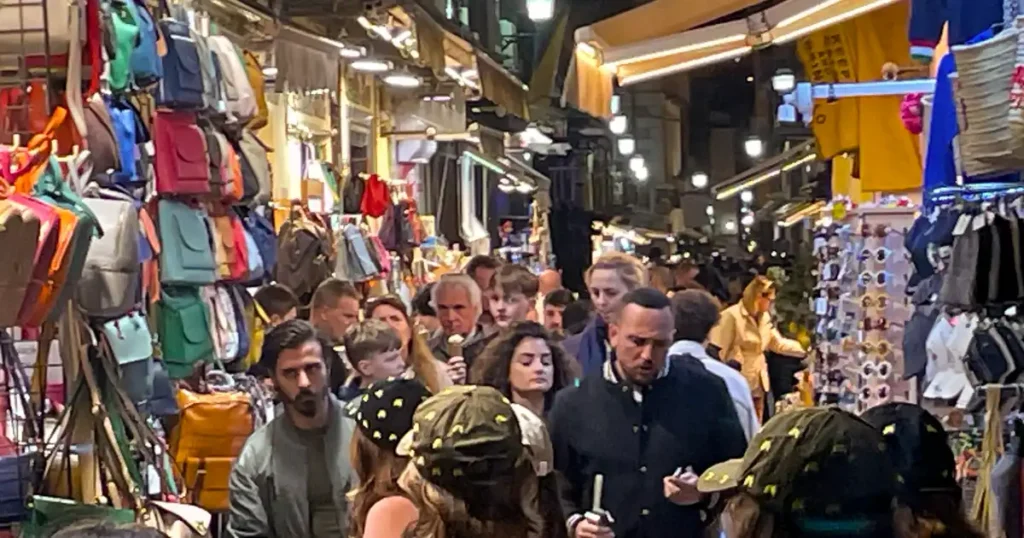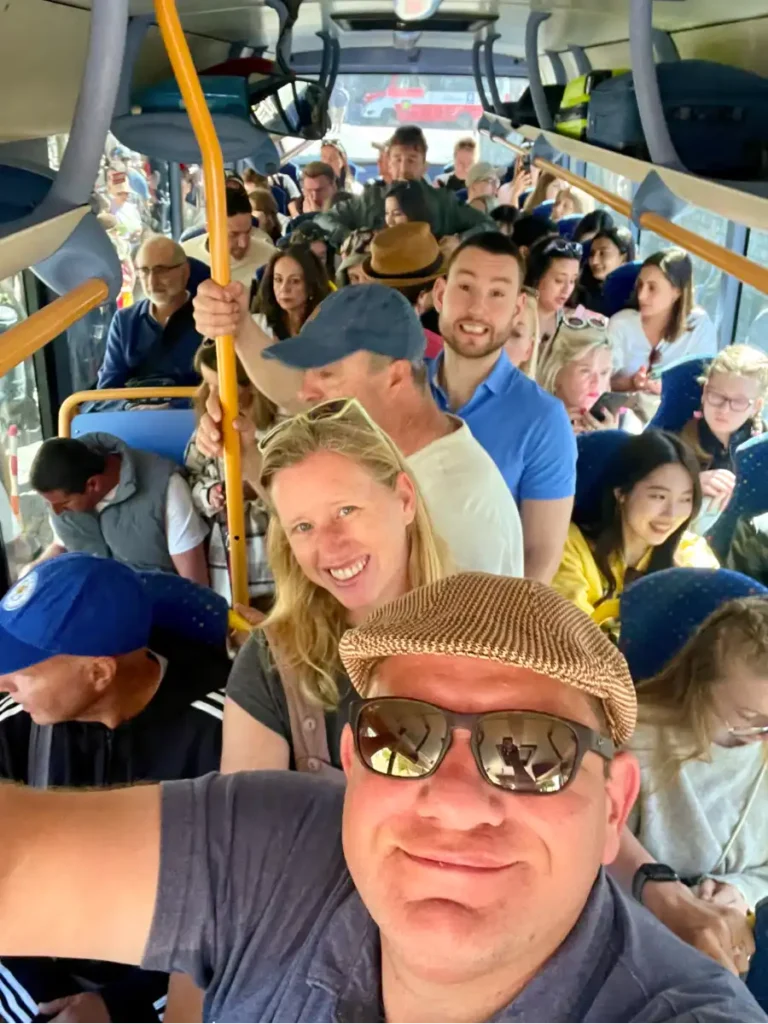Slow Travel Lessons Learned From The Amalfi Coast
As full-time nomads, we’ve learned that slow travel is about balancing careful planning and embracing spontaneity. Both approaches have benefits: planning helps us avoid stress and ensure we experience what matters most, while spontaneity adds the thrill of discovery. But achieving this balance isn’t always easy, especially when faced with the challenges of overtourism.
Table of Contents
QUICK NOTE: This post contains affiliate links and Two Traveling After One may receive a commission for purchases made through these links, at no extra cost to you.
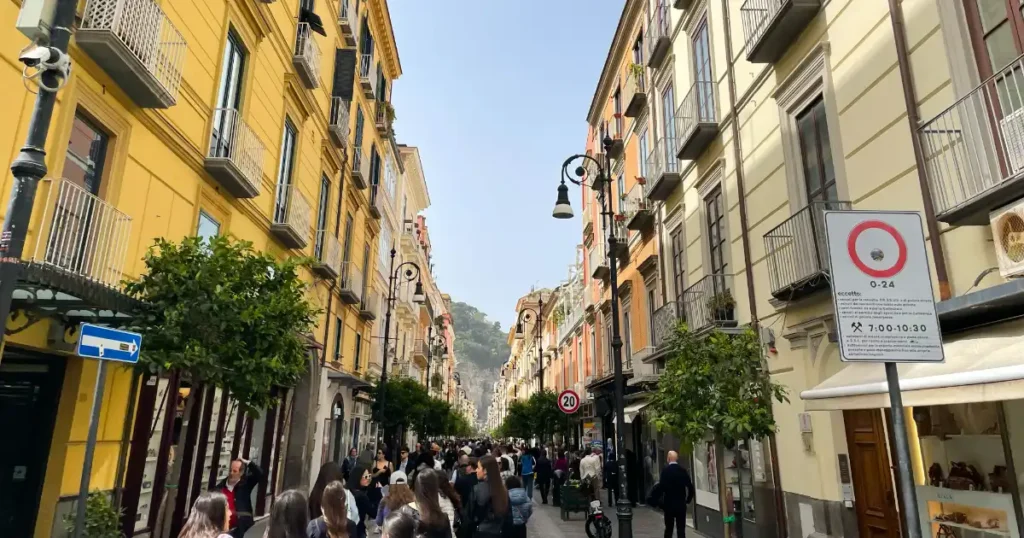
A Hard-Learned Lesson: The Amalfi Coast
This spring, we visited the Amalfi Coast, a destination on our bucket list for years. While the scenery and the food were stunning, our experience left us rethinking how we approach specific destinations. Even in what we usually consider the best time to travel to almost any destination, the shoulder season, the Amalfi Coast, was packed. Buses and ferries were overflowing, making it difficult for travelers and locals to get where they needed.
The costs were also significantly higher than we anticipated. Every aspect of our trip, including transportation, meals, and even a simple ferry ride, required reservations well in advance. We risked missing out entirely if we weren’t on top of everything. The constant need to plan every detail removed much of the joy and spontaneity we love about slow travel.
Sadly, the experience felt more like navigating a theme park than enjoying an authentic slice of Italian life we had hoped for. While we appreciated the region’s beauty, it needed and lacked the sense of connection we look for in our travels. After this trip, we realized that future visits to Italy and other destinations struggling with over-tourism would focus on less tourism-driven areas worldwide. Our future trips to Italy would likely focus more on Sicily, Puglia, or Umbria versus the tourist hot spots we visited this spring.

Why We Feel Other Areas Globally and In Italy, Offer a Better Balance
After a month of living there, Sicily felt like the Italy we searched for. It had all the charm, history, and incredible food without the overwhelming crowds. There was room for spontaneity, whether exploring ancient ruins, stumbling upon a quiet piazza, or enjoying a leisurely meal at a family-run trattoria. Sicily reminded us that true magic happens when you can linger, wander, and discover without a rigid itinerary.
Check Out Our Latest Videos!
Why Planning Still Matters
That’s not to say planning isn’t necessary. In regions like the Amalfi Coast, where demand outstrips resources, planning is essential to avoid stress and ensure you can experience the highlights. For example, you may miss out on ferries or dinner spots without reservations, leaving you frustrated and scrambling for alternatives.
We’ve also found that planning helps us respect local communities. In overcrowded areas, the infrastructure is often stretched thin, impacting residents’ daily lives. By doing our research, traveling during the offseason, and avoiding peak times, we aim to minimize our impact and make the experience more enjoyable for everyone.
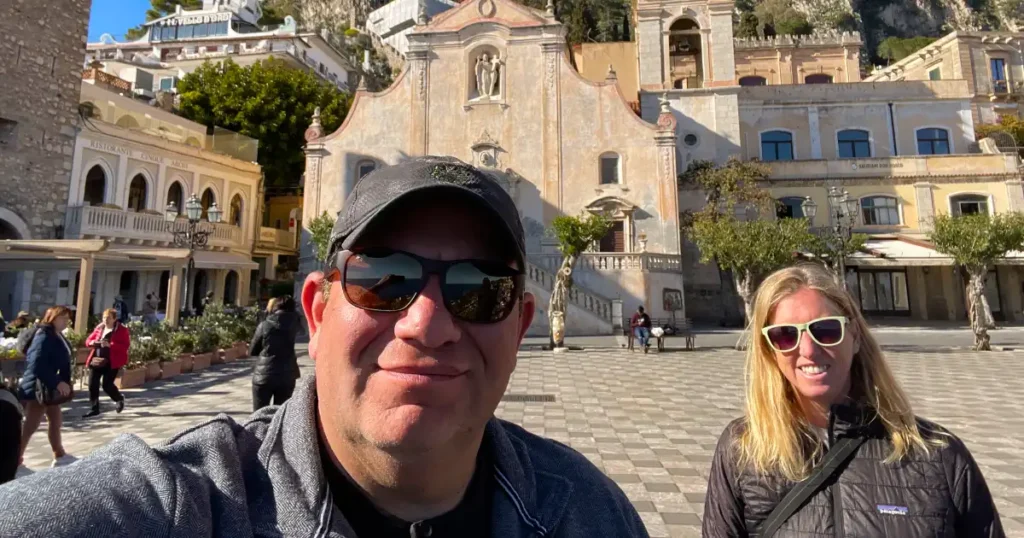
The Case for Spontaneity
At the same time, we know the value of leaving room for the unexpected. Some of our favorite memories, like discovering a hidden beach in Tahiti or stumbling upon a street food market in Palermo, Sicily, happened because we allowed ourselves to explore without a set plan.
Traveling spontaneously also challenges us to think on our feet and adapt when things don’t go as planned. It reminds us that even when plans fall apart, there’s always an opportunity to create something memorable.

How We Balance Both
So, how do we find that sweet spot between planning and spontaneity? Here’s what works for us:
1. We choose the correct destinations; to avoid frustration, we research and plan meticulously for heavily touristed areas in Italy, like the Amalfi Coast, Florence, or Venice. This has allowed us to know when a cruise ship may be in town or how a local holiday could increase regional tourism. Signing up for safe traveler alerts could also help you avoid significant events and political protests that we have encountered and be able to prevent getting too close or just appreciating from a safe distance.
2. We now try to stay outside the areas overrun by tourists and keep our plans loose in the less crowded spots to leave room for discovery. For example, we stayed in Sorrento versus Amalfi and Murano versus Venice. Each offered a short bus or water taxi ride and was a short distance from the action, but with fewer tourists as the afternoon winded down in each location.
3. We plan the essentials and book accommodations and transportation well in advance, leaving our daily activities more flexible. Planning for these locations six months or a year in advance can be advisable, especially if you are slow traveling. Short-term reservations may significantly hamper your ability to book an extended month or longer stay.
4. We stay Informed; a little research goes a long way. Knowing when buses and ferries run with fewer crowds or which restaurants require reservations can save a lot of hassle. One silver lining to staying in Sorrento beyond the convenience of the Amalfi coast was that we knew we could find a restaurant nearby with fantastic food that appealed to the local community as much as the slow travelers who are not swayed by top restaurant lists on social media
5. We embrace detours; when things don’t go as planned, we remind ourselves that figuring it out is part of the adventure and something we have become increasingly confident with the longer we travel. Slow travel allows us to skip a day when the weather is not the best or simply too warm or cold. We can stay in and get some work done or stay connected with family and friends. The days are more plentiful in our reality, and not every box needs to be checked to feel we got the most out of any destination.
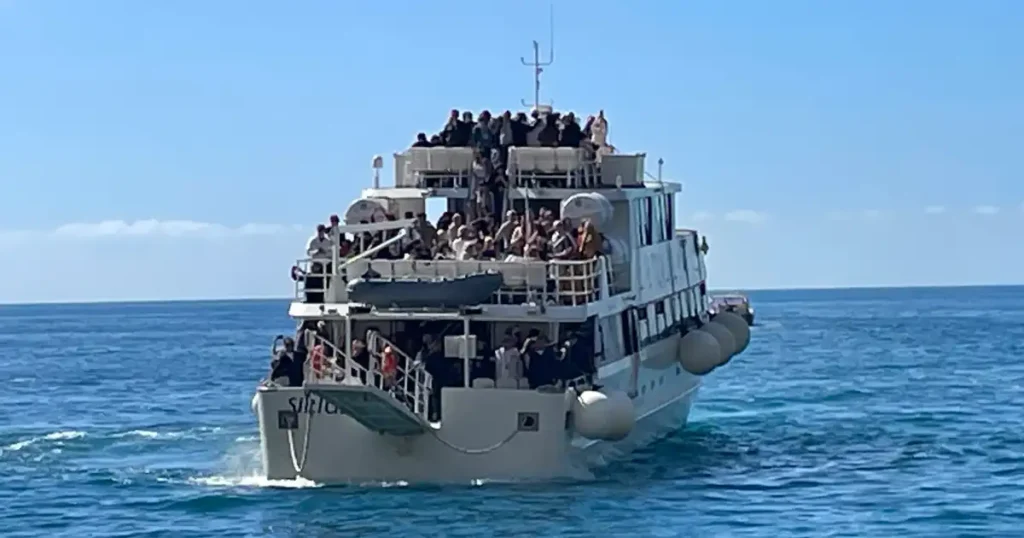
Encouraging Both Approaches
We want to encourage all travelers to find their balance. There’s joy in the certainty of a well-laid plan and the excitement of the unknown. The key is to stay adaptable and recognize when one approach might work better for you and the communities we all visit.
The Amalfi Coast and other areas with year-round tourism struggles taught us how over-tourism can strip away the spontaneity and connection we seek. While glad we visited, we’ve decided to focus future trips on less tourist-centric destinations where we can enjoy the balance of planning and discovery we love.
If you’re planning a trip to Italy, we can’t recommend Sicily enough. For us, history, culture, and spontaneity came together most magically. And if all else fails, remember that the real adventure often begins when plans fall apart.

The Global Impact of Over-Tourism
Over-tourism has profound environmental and social consequences. For local communities, it strains infrastructure, drives up housing costs, and creates dependency on tourism, often leaving other industries underdeveloped.
Environmentally, overcrowding leads to pollution, waste, and damage to these natural sites, causing erosion and loss of biodiversity, which we can do something about as slow travelers. Our carbon footprint from constant travel also contributes to climate change.
As slow nomadic travelers, it’s crucial to consider the impact of our choices. By supporting sustainable practices, like visiting in off-peak times and exploring less-touristy destinations, we can help preserve these places for future generations. Thoughtful travel benefits both our experiences and the communities we visit and love. Here are a few simple ideas beyond what has already been mentioned that we are incorporating into our travels. Instead of renting a car, opt for local transportation or take a high-speed train to your destination; we have found that it is sometimes faster than regional flights. If plane travel is required, consider and implement the programs offered by the airlines to offset your carbon impact. Finally, you can sign up for a local community cleanup; we have participated in these events in the US and Mexico. However, we always try to pick up trash and dispose of it properly while we walk and explore our travel destinations.

Future Travel Goals and Excitement
Our travel approach will evolve as we explore new destinations and deepen our commitment to slow, intentional journeys. We’re excited to visit places that allow us to blend planning with spontaneity in ways that create memorable, authentic experiences. Our upcoming travels will focus on lesser-explored corners of the world, like our current location, Buenos Aires, and the Patagonia region of Argentina. Where we can savor the local culture, enjoy more meaningful interactions, and discover hidden gems away from the tourist crowds.
As we continue to share our journey, we’re excited to dive deeper into topics such as sustainable travel, off-the-beaten-path destinations, and how to balance life on the road with personal growth. We can’t wait to bring you along as we explore new regions, including, one day, more of Italy, focusing on non-tourist-centric areas like Puglia and Umbria. Stay tuned for an upcoming travel series exploring slow travel, providing tips, insights, and stories that will inspire your own adventures.
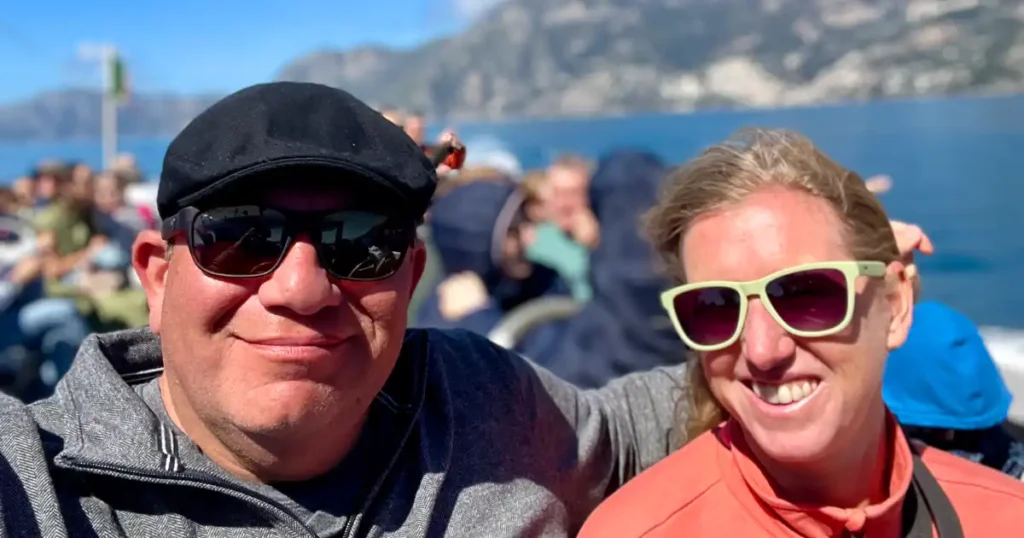
We’d love to hear from you! How do you balance planning and spontaneity in your travels? Have you encountered challenges or found joy in this blend? Share your experiences in the comments below, and feel free to pass this blog along to anyone who might benefit from our insights. Let’s continue the conversation and inspire each other to travel thoughtfully and intentionally.

